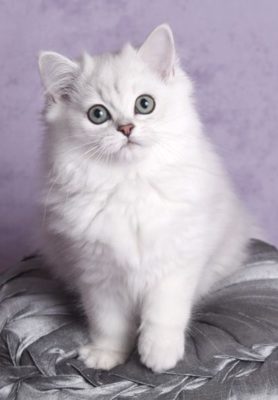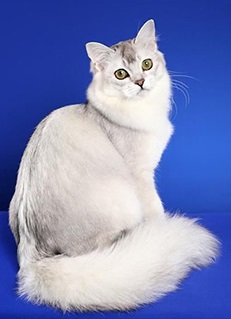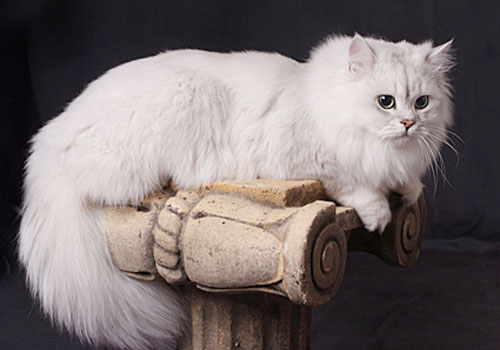Burmilla Longhair
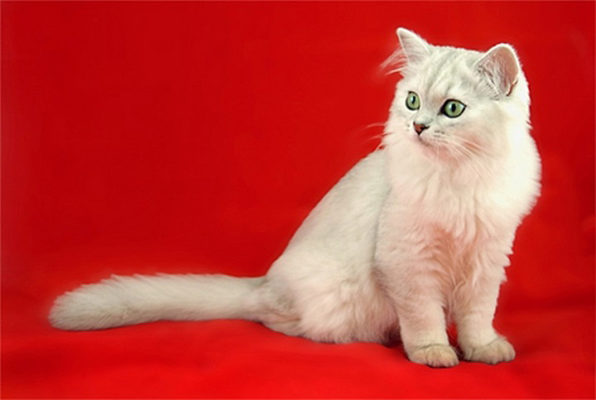
Burmilla Longhair has a gentle disposition and incredibly malleable character. This cat is a godsend for a person who wants to get tenderness and warmth from a pet. Burmillas are very sensitive to the mood of the owner. If the owner clarifies that he is busy – the Burmilla will patiently leave him alone and will obediently wait nearby. The breed is also kind to children.
Table of Contents
Breed Information
| Origin | Australia |
| Size | Males 30-35 cm Females 28-33 cm |
| Weight | Males 5-7 kg Females 4-5 kg |
| Fur Type | Semi-long-haired |
| Color | Blackened silver, cream, black, smoky, mauve |
| Lifestyle | Indoors |
| Lifespan | 13-18 years |
| FIFe Classification | Category III: “Short-haired and Somali” Breed designation – BML |
| WCF Classification | Group 2: “Semi-long-haired” Breed designation – BML* |
| TICA Classification | – |
| Group | Long-haired cats |
| Price | $500-700 |
Breed Photos
Origin History
The appearance of the breed, according to one version, is considered an accident. Baroness von Kirchberg from Great Britain acquired a Persian chinchilla cat and a Burmese cat. It is noteworthy that the name of the breed “Burmilla” is also directly derived from the two breeds. It is based on the words “Burma” and “Chinchilla”.
While the newfound owner was looking for a mate for each of the kittens for further breeding, the kittens managed to do it on their own. The born kittens become healthy and incredibly beautiful, which encourages the felinologists to breed the breed further.
In the early 1980s, work on the breed began. Two enthusiastic Australian breeders, Tina Tisdale and Colin Walters were seriously engaged in it. The ideal representatives of the breed were selected after crossing a Burmese and a Persian cat. At the Sydney show, the breed was introduced under the name “Australian Tiffany”. But this name was not subsequently registered as official.
In 1999, the World Cat Organization registered the breed standard. Thus the Burmilla Longhair got a new name and official recognition. Outside Australia, the Burmilla Longhair is rare; the short-haired version of the breed is more preferred.
Appearance
From Burmese cats, Burmilla Longhair inherited the physique and from the Persian chinchillas’ unique color. Burmilla Longhair is a cat of medium size and a very elegant appearance. The physique is strong and harmonious. The head is rounded, with pronounced cheeks. The ears are set moderately wide, of medium size, and inclined slightly forward. The muzzle is broad and tapered toward the chin. An overly elongated muzzle is considered an aberration.
The transition from the forehead to the nose is smooth. The eyes are wide and large with a very attentive gaze. The color of the eyes in the Burmilla Longhair varies depending on the color. Any shade of green is allowed; amber is allowed in cream and tortoiseshell colors. Yellowish eye color is allowed by the standard for kittens and young cats under two years of age.
The back of the Burmilla Longhair is strong and straight. The limbs are slender and graceful. The tail is straight, broad at the base, and tapering to a rounded tip. It is the coat that is considered the main advantage of the breed. It is long and silky. The undercoat is usually of a silvery-white or golden tint. According to the standard, any color should be slightly blurred. Allowed color variations:
- obscured (brown and mauve shades);
- smoky (black and chocolate color);
- solid (cream, bombay, black british, black tortoise);
- tiger (speckled blue, speckled black).
Character
Burmilla Longhair has a gentle disposition and incredibly malleable character. This cat is a godsend for a person who wants to get tenderness and warmth from a pet. Burmillas are very sensitive to the mood of the owner. If the owner clarifies that he is busy – the Burmilla will patiently leave him alone and will obediently wait nearby. The breed is also kind to children.
Burmilla Longhair will gladly keep a child of any age company in a variety of games. In relation to other animals, he is quiet but may show signs of jealousy and fight for the owner’s attention. Owners note an interesting feature of the breed – Burmillas love to watch everything that happens around them.
Care
Despite having a long coat, Burmilla Longhairs do not need daily brushing. It will be enough to comb the pet twice a week. Representatives of the breed do not like water, so frequent water procedures are not necessary. Bathing Burmilla Longhair is recommended once every few months. Be sure to use a special shampoo to maintain the luxurious look of the coat. Otherwise, stick to the standard hygienic recommendations. Brush teeth, clean ears, and trim nails several times a week.
Education
The Burmilla Longhair is a trouble-free breed. She listens to every member of the family. You will quickly accustom the cat to the litter box and the scratching post. Be sure that the Burmilla will not spoil the furniture in your home and will not show aggression for anything. Some owners note that the Burmilla is also easily accustomed to the leash and loves to walk with the owner.
Common Diseases
The health of the Burmilla Longhair depends not only on the proper care of the pet but also on the genetic characteristics. There is a risk of some diseases in the breed:
- hip dysplasia;
- neurological problems;
- polycystic kidney disease;
- diabetes mellitus;
- obesity.
Nutrition
The diet for a Burmilla Longhair should be chosen without an abundance of fatty foods. The main component should be protein. The breed is prone to gaining extra pounds, so the menu must be balanced. It is where premium dry cat food for medium breeds is excellent.
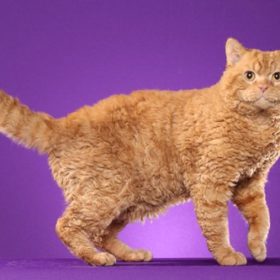 Selkirk Rex Shorthair
Selkirk Rex Shorthair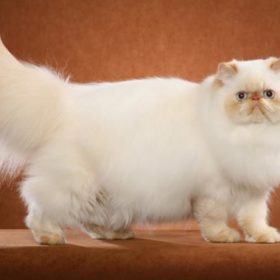 Himalayan Cat
Himalayan Cat Japanese Bobtail Longhair
Japanese Bobtail Longhair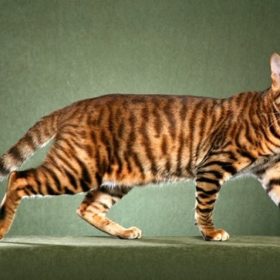 Toyger
Toyger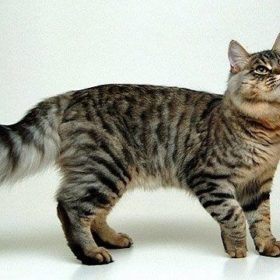 Domestic Cat
Domestic Cat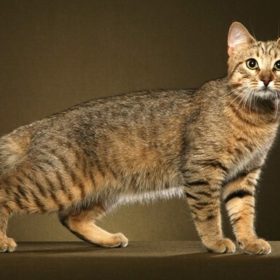 Pixie-bob Shorthair
Pixie-bob Shorthair